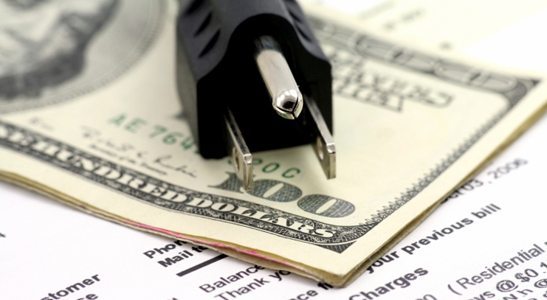Arizona Public Service Electric (APS) and Salt River Project (SRP), two of Phoenix’s largest electricity providers saw record-breaking demand for electricity and energy use this July with APS peaking at 7,659 megawatts (MW) of demand and SRP peaking at 7,615 MW.
That wasn’t the only record broken in Phoenix this year. Last Wednesday, the city reached its 144th day of triple-degree heat in 2020, breaking the previous record set in 1989 according to the National Weather Service.
One Phoenix resident who noticed rising electric bills is Steve Yozwiak, a senior science writer for The Translational Genomics Research Institute. Yozwiak said he suspects his bill is higher because he is working from home instead of going into the office.
“I need to keep it comfortable for me to do my work,” Yozwiak said. “I’m a writer; it takes a lot of concentration.”
To keep his home at the optimal temperature to work, Yozwiak, an APS customer, has to run his air conditioner all the time. According to Alan Bunnell, who works in external communications for APS, weather causing higher air conditioning use is a major factor in their business.
Before the pandemic, Yozwiak would turn his air conditioner off when he left for work in the morning, then turn it back on when he returned home. Now he has to run his unit constantly. As a result, Yozwiak said his energy use this July was double what it was last year, with his bill totaling $367.11.
Yozwiak, who has lived in Arizona for over 60 years, said this August is the worst he can remember. Typically, his electricity bill in August is around $200. This August, it was $413.01.
Yozwiak said he is glad he can stay safely at home during the pandemic despite the higher electricity bills, though he said the heightened cost, “is a pain.”
SRP and APS both have programs to help people struggling with bills due to the pandemic with APS extending its disconnection moratorium for all customers through the end of the year and SRP extending their disconnection moratorium for economy price plan customers through the end of the year.
Heightened energy use by customers means a higher load for utility companies. Though the coronavirus pandemic and the heat were both unexpected, Harry Sauthoff, manager of forecasting at SRP, said the company can meet the higher load because of their planning.
“If you have a car you always have a spare tire,” Sauthoff said. “If one tire breaks you can replace it with the spare tire and still get where you want to go.”
Electric companies use a measure called cooling degree hours to determine when energy use will be higher. For SRP, a cooling degree hour is designated if the temperature is 75 degrees or above because 75 degrees is when they see energy demand increase due to air conditioning use. If the temperature is 100 degrees for an hour the cooling degree hour is 25 because it is 25 degrees more than the baseline. This year, SRP’s cooling degree hours for May through September surpassed 70,000, significantly more than the company’s 20-year average of 60,000 cooling degree hours.
That increase, combined with the pandemic, represent the broken tire in Sauthoff’s analogy. According to Sauthoff, business closures due to the pandemic have somewhat offset the higher load from people working at home.
“We’re having a little higher sales because you have more people from home and some students are still online,” he said. “Our commercial customers have a little bit lower load. Those two have been balancing each other out.”
Data from APS tells a similar story. After adjusting for weather, APS saw slightly lower energy use between March 29, 2020 and May 10, 2020 than during that time period in 2019. Arizona Governor Doug Ducey’s initial stay-at-home order for the pandemic started March 31 and ended May 15. Bunnell said businesses using less energy during that time was responsible for the lower sales despite residential sales being slightly up.
According to Sauthoff, it’s difficult to predict what will happen in terms of electricity in the coming months because, “the industry doesn’t have much to look to.” However, he said SRP has many potential forecasts and backup plans to keep service running smoothly.
As for Yozwiak, he’s hoping temperatures decrease soon.
“I am lucky that I’m in a place personally and professionally where I can afford bills that are this high,” Yoziwak said. “I really feel sorry for the many people that are out there and are having a hard time getting bills like this.”




